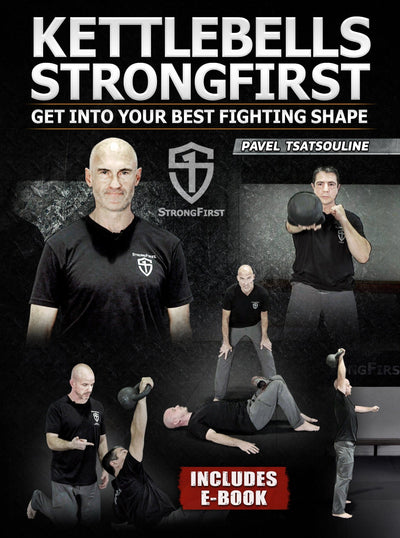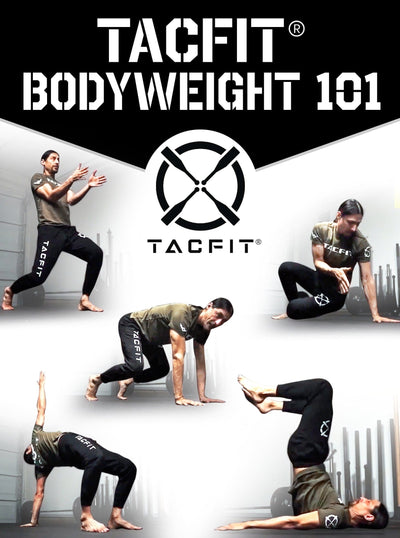Kettlebell Overhead Lunge
In the realm of functional fitness, few exercises are as effective and challenging as the kettlebell overhead lunge. Combining the benefits of lunges and overhead exercises, this compound movement engages multiple muscle groups, improves stability, and enhances overall strength. Whether you're an athlete, fitness enthusiast, or someone looking to take their workout routine to the next level, incorporating kettlebell overhead lunges can deliver exceptional results. Let's delve deeper into the numerous advantages and key considerations of this dynamic exercise.
What this article covers:
- Kettlebell Side Lunge
- Kettlebell Reverse Lunge
- Kettlebell Lunge Press
- Kettlebell Walking Lunge
- Kettlebell Lateral Lunge
Building Total Body Strength
Kettlebell overhead lunges primarily target the lower body muscles, including the glutes, quadriceps, hamstrings, and calves. By adding resistance in the form of a kettlebell, this exercise forces these muscles to work harder, leading to increased strength and muscular development. Moreover, the overhead position places additional demands on the core and upper body, particularly the shoulders, arms, and upper back. As a result, kettlebell overhead lunges provide a comprehensive workout, building total body strength and promoting muscular balance.
Improving Stability and Balance
One of the standout benefits of kettlebell overhead lunges is their ability to enhance stability and balance. The overhead position challenges the core muscles, forcing them to engage to maintain an upright posture while lunging forward. The muscles around the hips and ankles also play a crucial role in maintaining stability throughout the movement. By regularly incorporating kettlebell overhead lunges into your routine, you'll notice significant improvements in your ability to stabilize your body, leading to better performance in various physical activities.
Enhancing Functional Fitness
Functional fitness revolves around movements that mimic real-life activities. Kettlebell overhead lunges are a prime example of a functional exercise, as they replicate the movement patterns required for activities like running, jumping, and even lifting heavy objects overhead. By training your body to perform such compound movements with resistance, you improve your overall functional fitness, making everyday tasks easier and reducing the risk of injuries.
Developing Core Strength and Postural Control
The overhead position of the kettlebell in this exercise creates a unique challenge for the core muscles. Your core must engage to stabilize your spine and maintain proper alignment while lunging. This engagement not only develops core strength but also promotes postural control. By practicing kettlebell overhead lunges, you can strengthen your core muscles, improve your posture, and reduce the risk of lower back pain.
Kettlebell Side Lunge
The kettlebell side lunge adds a lateral component to the traditional lunge, targeting the inner and outer thighs, glutes, and hips. Holding the kettlebell with both hands in front of your chest, take a wide step to the side, keeping your toes pointed forward. Bend the knee of the lunging leg while keeping the other leg straight. Push off with the lunging leg to return to the starting position. The kettlebell provides added resistance, intensifying the muscle engagement and helping to develop strength in the lateral lower body muscles.
Kettlebell Reverse Lunge
The kettlebell reverse lunge places emphasis on the hamstrings, glutes, and calves. Holding the kettlebell with both hands, start by stepping backward with one leg, lowering your body until both knees are at 90-degree angles. Push through the front heel to return to the starting position. This variation helps improve balance and stability while targeting the posterior chain muscles. The kettlebell adds resistance, challenging the muscles further and promoting strength development.
Kettlebell Lunge Press
Combining the benefits of a lunge with an overhead press, the kettlebell lunge press is a dynamic full-body exercise. Hold the kettlebell in one hand at shoulder height, lunge forward with the opposite leg, and simultaneously press the kettlebell overhead. This movement engages the lower body muscles while also challenging the core, shoulders, and arms. It improves overall strength, coordination, and stability while providing an effective cardiovascular component to your workout.
Kettlebell Walking Lunge
The kettlebell walking lunge adds an element of mobility and coordination to the exercise. Hold a kettlebell in each hand at your sides, step forward with one leg into a lunge position, and bring the back leg forward to meet the front leg. Repeat the movement, alternating legs as you walk forward. This variation enhances lower body strength, stability, and balance, while the added weight of the kettlebells increases the intensity of the exercise.
Kettlebell Lateral Lunge
The kettlebell lateral lunge is an excellent exercise for targeting the inner and outer thighs, glutes, and hips. Hold the kettlebell with both hands in front of your chest, and take a wide step to the side, keeping your toes pointed forward. Shift your body weight to the lunging side while bending the knee and keeping the other leg straight. Push off with the lunging leg to return to the starting position. This lateral movement strengthens the muscles responsible for side-to-side movements and enhances overall lower body strength.
Incorporating these kettlebell lunge variations into your training routine can provide a well-rounded lower body workout, engaging different muscle groups and enhancing your overall strength, stability, and mobility. Remember to start with lighter weights and gradually increase the load as your form and strength improve. Always prioritize proper technique and listen to your body to prevent injuries and optimize the benefits of these exercises.
Kettlebell overhead lunges offer a challenging and effective way to improve strength, stability, and functional fitness. By incorporating this compound movement into your routine, you can develop total body strength, enhance stability and balance, and strengthen your core muscles. However, always prioritize safety and proper technique to reap the full benefits of this exercise. So, grab a kettlebell, find some open space, and get ready to unleash the power of kettlebell overhead lunges for a stronger, fitter, and more resilient body.
Did you find the blog helpful? If so, consider checking out other guides:
- Kettlebell Lunges
- Kettlebell Curtsy Lunge
- Kettlebell Goblet Walking Lunge
- Kettlebell Lunges Muscles Worked
- Kettlebell Thruster
- Kettlebell Squat Thrust
- Kettlebell Thrust
- Banded Kettlebell Hip Thrust
- Double Kettlebell Snatch
- The Kettlebell Half Snatch
- Kettlebell Clean and Snatch
- The Kettlebell Ballistic Row
- Bent Over Kettlebell Row
- Kettlebell Push Up with Row
- Kettlebell Inverted Row





